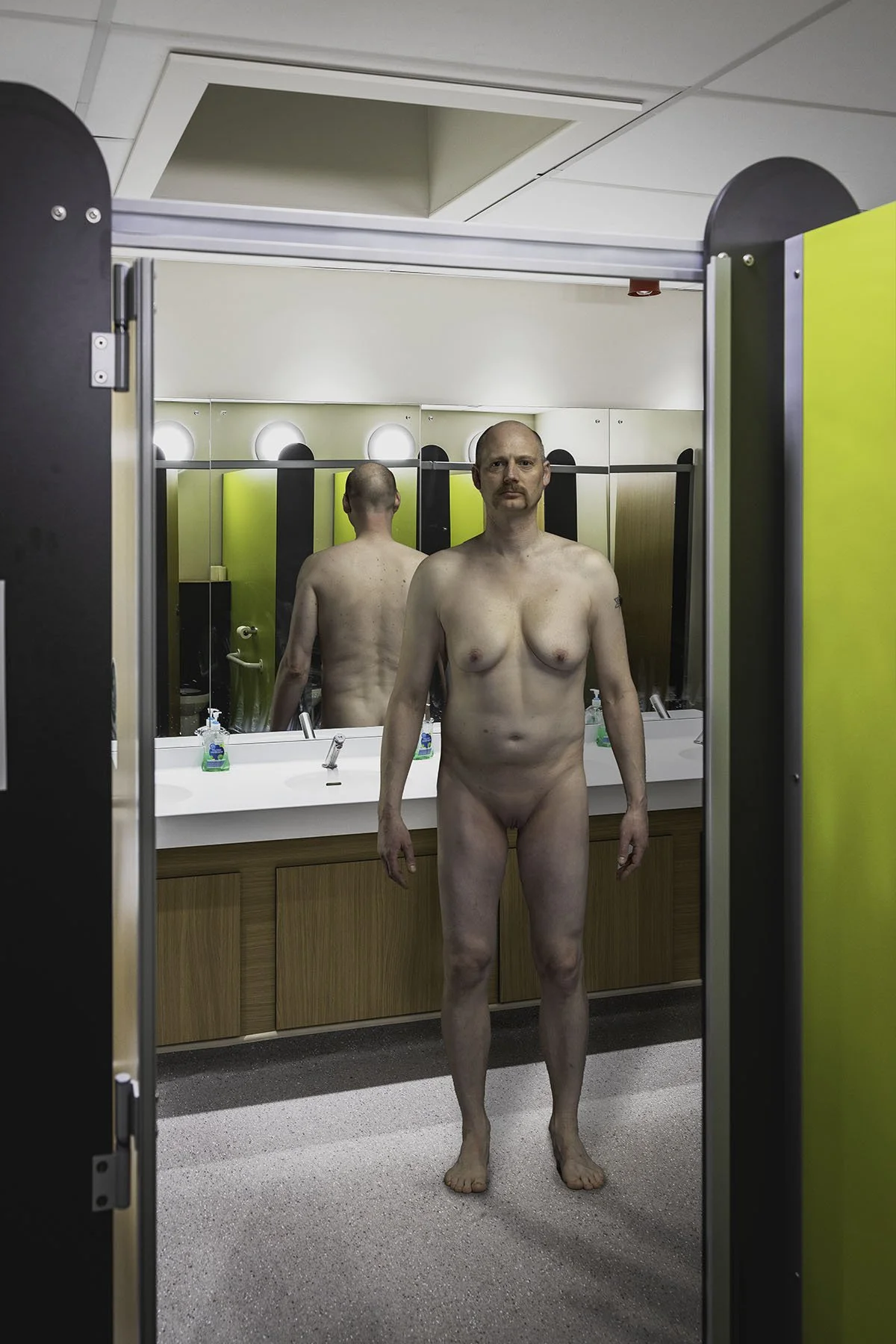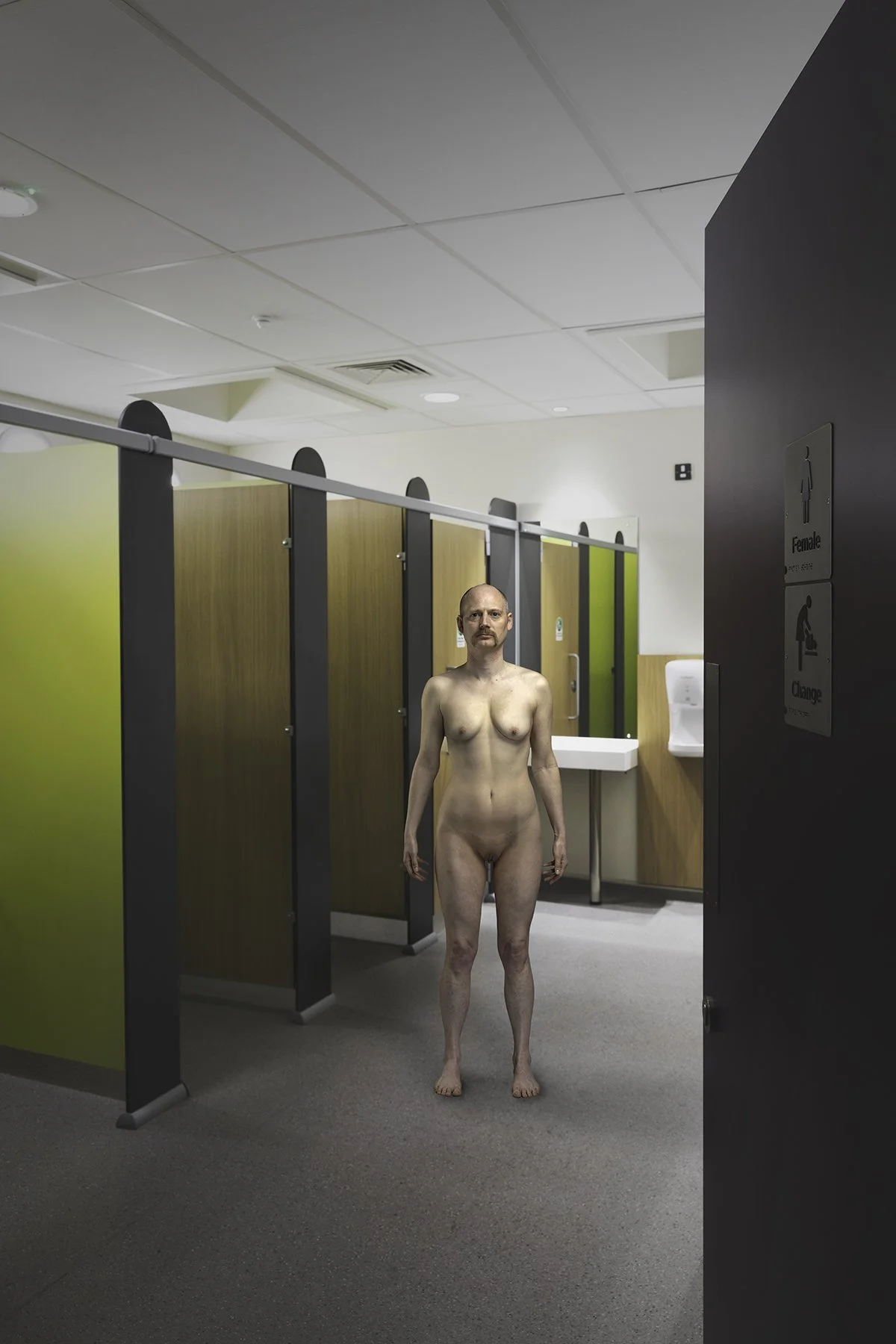Further Reflections - Testing Out of Place
Having completed my first tests of creating the ambiguously gendered beings, I felt that I had succeeded in creating eerie, unsettling beings that would cause the viewer to look twice and perhaps even to think about gender and the ways in which it does and does not relate physical biological states. However, it was also clear that unlike much of my previous work which has specifically focussed on the body that the location, the context in which these new bodies are situated is of paramount importance. If in this project the bodies represent and stand-in for the non-binary psychic human interior, then the gendered locations I wish to situate them in represent the socio-cultural norms of binary gender. It is therefore essential to capture the contrast and conflict between the two to achieve the desired result.
I therefore needed to draft some further composite images, this time placing my peculiar bodies into the locations I had already photographed. I did have concerns that the spaces would be too small to be effective without using a very wide-angle lens but it was suggested that making better use of the mirrors might help in this regard. Another point that came up in a feedback discussion was that It might be interesting to position the subject in such a way that it is being seen from within one of the toilet cubicles. This point is of course critical as the position from which one photographs provides the perspective of the person viewing the final image also. Furthermore, the position of the camera can also represent a third position, neither of the photographer, or the audience but instead that of a person that could only be in that particular place. In the gendered space of a female only toilet facility, this means the camera and the view from its position becomes a proxy for a female position, i.e. what a woman would see.
Following that discussion I then made the two composite images above. One which utilises the perspective from within a toilet cubicle but also the mirrors in the background to give a greater sense of depth and space. Conversely, the second image takes a position from just outside the room, necessitated by the small space and the restrictions of lenses available to me at that time. I do not think an image from this perspective is entirely unsuccessful, but it is clear to me at least that there is a different implication having an external viewpoint as opposed to one from inside the gendered space.
A further observation that came out of the discussion was that the static nature of the characters may not be the most effective option. Why not instead have the subjects performing appropriate activities, for example, looking into one of the mirrors and titivating their hair, checking their appearance? This would also speak to the act of “doing gender” within the gendered space and thus consolidate my message while also creating a more dynamic image. Mirrors also have a legacy of being employed in female art, just as the self portrait does. In these cases the self-portrait is effectively equivalent to the mirror in the way that it “others” the female artist creating the image, just as a patriarchal culture “others” women as something to be looked at and judged not only by men but women themselves. It therefore seems essential to factor the use of mirrors into at lest some of the final pieces.
Another thing that I would like to add to future images is other characters, but beings that conform to the gendered space rather than contradict it, this would both add further dynamism and visual interest to the images but also heighten the tension between the “out of place” beings and their environment.

